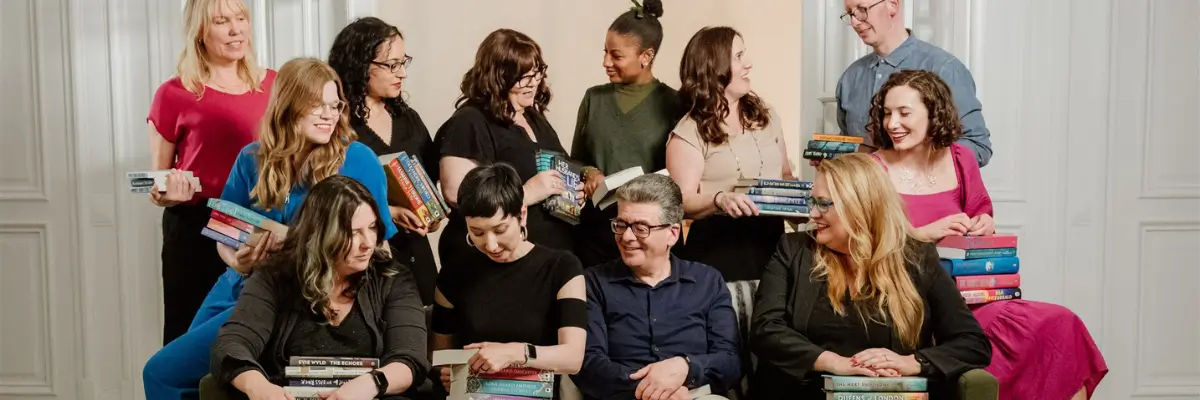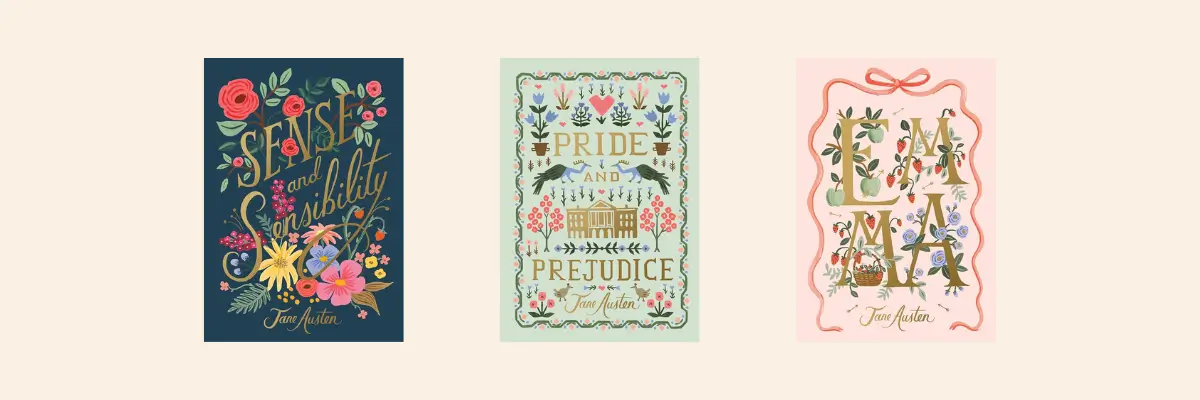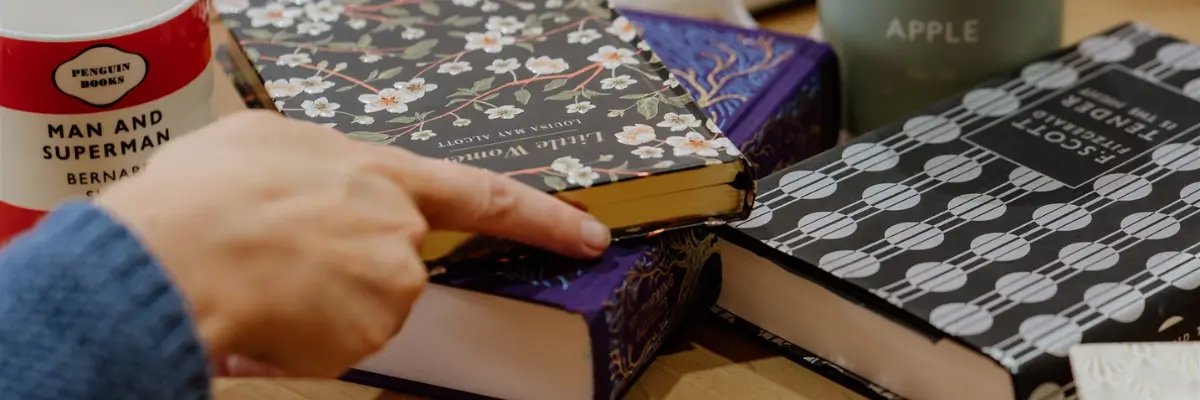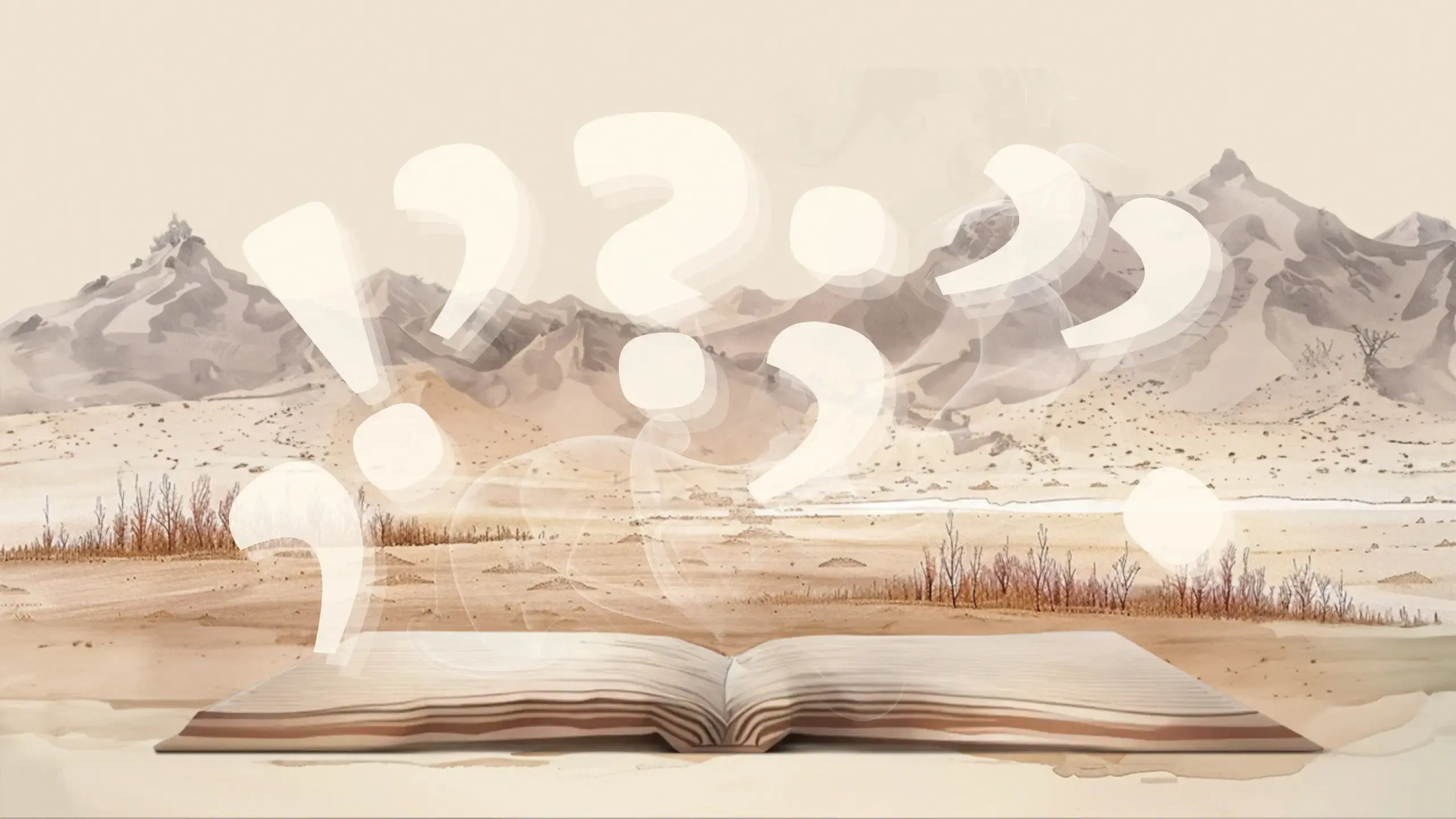Before we even approach our first draft, should we be asking: what is a novel?
In this article, YA and fantasy author and writing coach Ella McLeod asks and answers this deceptively complicated question.
Ella’s debut YA novel, Rapunzella, Or, Don’t Touch My Hair, was nominated for the prestigious Branford Boase Award and received rave reviews in Kirkus, the Irish Times, and the Guardian, and her second novel was a Guardian Best Books pick.
Today, Ella offers an extended consideration of the novel from its technical definition, early origins, and subsequent development across centuries. For further considerations of literary forms, see The Novelry’s creative writing blog right here.
%2520(1).webp)
The beginnings of the novel
It seems like an easy question, doesn’t it, with a couple of easy answers?
The word novel comes from the Latin word for ‘new’ and was used by Italian writers in the fourteenth century. The Decameron was a collection of 100 stories by Giovanni Boccaccio, published in 1353, and thus the term novella was born. From there came the use of the word ‘novel,’ describing an evolution of this new form of storytelling, which became popular in English parlance three centuries later.
An invented prose narrative that is usually long and complex and deals especially with human experience through a usually connected sequence of events.
—Merriam Webster
Simple.
And yet… That doesn’t quite cut it, does it? There’s something lacking in a dictionary definition sometimes, and as much as I love etymology, even knowing the romantic root/route of the word from Latin to Italian to English fails to articulate the nuanced way that this form interacts with and explores the human experience.
It also doesn’t quite get to the heart of what sets novels apart from other narrative forms; good journalism is prosaic, poetry deals with the human experience, and drama uses connected sequences of events.
So what makes novels, even now, so—well—novel?
If you don’t know, never fear. Here at The Novelry, growing writers and novels is what we do. I’m going to combine some of our trademark pearls of wisdom with general musings from my own experience to make sense of this thing that we so love.

The history of the novel
So, how did we get here? And where did we begin?
Before the modern novel, there were many contenders for the dominant mode of storytelling, from epic poetry to Greek dramas that popularized comedy and tragedy.
Chivalric romances became popular in the fourteenth century, many of which were still told in verse. An increased interest in prose at this time is evident from the rise in the novellas I mentioned earlier.
In the West, the modern novel is considered to have started in 1605 with The Ingenious Gentleman Don Quixote of La Mancha by Miguel de Cervantes, better known as Don Quixote.
However, the novel’s form can be traced back to 1010, when Japanese noblewoman Murasaki Shikibu began writing The Tale of Genji, which she completed in 1021. In her tale, Hikaru Genji, the son of a Japanese emperor, is made a civilian by his father. The novel pays particular attention to Genji’s romantic life as well as the conventions and traditions of the Japanese aristocracy.
The individual art form
In both of these novels, we see a more individualist art form developing. There was an increased emphasis on reading as a solo activity, where the reader engaged with the story on a personal level.
Epic poetry and drama were designed for group or public consumption, but the reader of a novel is, in the moment of reading, the lone witness to the world of the story. As a result, the novel interrogates the personhood of its protagonist more intimately. It takes a more nuanced look at its characters, focuses on internal monologue and interiority, and holds space for conflict and ambivalence more so than previous forms.

A novel’s protagonists aren’t archetypes; they’re not even always heroes. They’re flawed fictional characters and, as a result, often vessels for empathy.
Writing coach Heather Webb says:
As a kid, books were my friends. I was a military brat, so I moved constantly, and having stories as my constant companions helped soothe my loneliness and the grief I experienced constantly leaving friends and my world behind.
—Heather Webb
In England, Daniel Defoe is often credited with the rise of the English novel in 1719 with Robinson Crusoe, but I’d like to give Aphra Behn’s Love-Letters Between a Nobleman and His Sister (1684) its flowers.
The printing press
The birth of the printing press in Germany in the fifteenth century created an easier means of accessing relatively cheap entertainment and information. The process was industrialized in the nineteenth century, and this tied in nicely with the rise of the middle classes, whose wealth increased during the early days of the Industrial Revolution. This left more women at leisure, with higher levels of literacy than ever before, and novels boomed.
The nineteenth-century novel
Philosopher Georg Wilhelm Friedrich Hegel spoke in the early nineteenth century about dialectics:
A thesis is rebelled against by its antithesis.
The two are then resolved by a synthesis.
The Age of Enlightenment
Nineteenth-century literature, in my opinion, epitomizes this; the thesis was the Industrial Revolution, the Age of Enlightenment. Progress was prioritized, along with efficacy and mass production, and there was a notable decline in reverence for the pastoral.
The Romantic era
As a result, we had the Romantics, the antithesis, a movement of creatives who prioritized beauty, passion, intuition, and the sublime.
Romanticism reached its height in much of the Western world between around 1800 and 1850. It challenged the Enlightenment belief that human reason alone could explain the world, emphasizing instead the importance of intuition and emotion in gaining true understanding and insight. We’re talking about Lake poets like William Wordsworth and Samuel Taylor Coleridge, followed by the likes of Lord Byron, Percy Bysshe Shelley, and John Keats.
We can’t look at this period of literature without referencing Mary Shelley.
It’s useful to talk about Shelley here and consider her almost a precursor to the synthesis that came next: Realism. Shelley was a Romantic, and her novel Frankenstein contains elements of Gothic literature, often seen as a subgenre of Romanticism, as well as aspects of the fantastical.
Realism
But there was also a focus on human fallibility, self-destruction, and the psychological effects of sin and of guilt. The writers of the late nineteenth century focused on ordinary people. The rise of modernism, the breakdown of religion as the key organizing principle, and shifting social dynamics all saw a growth in appetite for detailed, accurate representation, particularly in novels.
Jane Austen’s many novels demonstrate the kind of storytelling that offered a critique of the sentimental fiction popular in the late eighteenth century, clearly marking the shift toward nineteenth-century realism. Her characters were nuanced and complex, virtuous and flawed. While her stories were mostly irreverent and light, they emphasized the crucial role of marriage for women in securing both social status and financial stability.

From story to novel
I won’t discuss the ins and outs of what comprises a story here, because we already have an amazing resource on that.
However, I want to draw your attention to a few key thoughts that I think are important when determining what a novel is and how it works.
Etymology of story
The word ‘story’ comes from an old French word, estoire, meaning tale, narrative, history, account, source, text, etc.
Writing coach Melanie Conklin shared a favorite quote of hers on story:
Story, as it turns out, was crucial to our evolution—more so than opposable thumbs. Opposable thumbs let us hang on; story told us what to hang on to.
—Lisa Cron, Wired for Story
So, how does a story, pregnant with potential, gestate into a novel? What about it serves this long-form, introspective style of narration?
In our blog on story, there is a quote I love:
As the life of the body is the blood, so the life of the novel is the ‘story.’
—The Strand Magazine (1897)
Let’s take it a step further, to the biology of a novel, if you will.
If the story is the lifeblood, then I imagine the novel is the body. The plot is the heart, pumping the story around the body—the novel—to the limbs, which are the characters (stay with me), the active output of all that life force.
That makes us writers the brain! We are the energetic, eclectic center of all the goings-on, making decisions and asking questions.
Even the brain depends on the health of the heart, and indeed, for writers, a plot in crisis can feel particularly arresting.
What we must always prioritize is the flow of the blood: the story. We must nurture our novels as we do our bodies, fueling them with inspiration and sustenance that will aid and abet the life-changing journey on which our readers are about to accompany us.
Curiosity, compassion, and connection in stories
What makes these journeys life-changing? Why do we go on them?
Good stories enhance our curiosity, heighten our compassion, and reify our ability to connect to each other—our ability to engage with storytelling is what makes us human. It sets us apart from animals; it—in my opinion—is the most vivid evidence that we are gestalt, not just flesh and blood, but that we contain something more; call it a soul, if you like.
Writing coach Emylia Hall says:
Novels are how we live more than one life. Whether we’re writing or reading, they’re a magic act that’s there for anyone who’s curious, open, and hungry for experience. Life made limitless.
—Emylia Hall
The novelist asks questions and allows the reader to find magic in exploring the answer. The novelist creates a world of connection out of the lives of strangers, giving the reader space to explore myriad other possibilities for their own lives.
Above all, the novelist assures the reader that whoever they are, wherever they are—they are not alone.

The classic
When we think of novels, we probably think of some of these:
- To Kill A Mockingbird by Harper Lee
- Beloved by Toni Morrison
- Pride and Prejudice by Jane Austen
- One Hundred Years of Solitude by Gabriel García Márquez
- The Lion, the Witch and the Wardrobe by C.S. Lewis
These are the novels that have stood the test of time, held up as examples in the fiction space. The themes are universal, the language is beautiful, the characters are nuanced and have depth.
I’ll leave the work of unpicking what, exactly, makes a novel a classic to a genius—Piers Torday, in our Classic Storytelling Class, speaks on this far more intelligently than I ever could. But for now, I’ll say this:
These stories have come to define what a novel is for a reason.
- They explore what it means to be in conflict, both with yourself and with the world around you.
- The use of fantasy. I don’t mean genre fantasy; I mean a leaning-in to the divine that lives within all of us, whether it’s the heady rush of falling or how utterly otherworldly growing up and coming of age can feel.
- Something truly unexpected. Again, I’m not specifically referring to twisty thrillers or action-packed adventure novels. The characters that stick with readers the most are the ones we relate to while being constantly surprised by—from Jo March of Little Women to Harry Potter to Marianne in Normal People. These are protagonists to love, to root for, to shout at through our pages!
And speaking of…
.webp)
The protagonist
They are the center of the novel, the reader’s eyes and ears in the world of the story. A novel’s protagonist sustains the form in a unique way; drama, for example, may give more airtime to side characters and subplots, allowing stories away from your central figure (or figures) to develop as a way of fleshing out the world and heightening stakes.
Writing coach Alice Kuipers shared some thoughts on this:
I look for a strong character who illuminates an emotional truth about my own life or the world I live in, while having adventures or experiences (or both) that transport me from my day-to-day... A vivid cast, crackling dialogue, and a satisfying ending are all bonuses.
—Alice Kuipers
The protagonist is what connects the author to the reader.
As I’ve mentioned before, the novel is a highly individualized art form. The reader, alone, exists in a relationship with the writer, also (mostly) alone. The conduit for that relationship, the vehicle for that intimacy, is the protagonist. They aren’t standing on a stage or projected to three times life-size on screen, addressing an audience and asking them to share their experience. They’re reaching out a hand from author to reader, holding them together for the length of the story.
Our novels’ protagonists are incredibly important; a well-realized protagonist can determine the success of a novel in a way that isn’t always true of other forms. A two-dimensional protagonist—one who is not active, defiant, observant, or sensitive (all things that generate plot, and therefore tension, stakes, action, and realization)—can alienate a reader.
There are plenty of excellent books with unlikable protagonists. This is fine—wonderful, even. But a poorly written protagonist in a book isn’t like a poorly written protagonist in a film or TV show; in drama, we have other colorful characters to hold on to. They are physically brought to life for us, and as a viewer, there is less work to be done in watching around a protagonist than reading around one.
What’s more, practically speaking, reading takes longer. Spending so much time being intensely focused on the interiority of a dull, lifeless character...? I think most of us would rather watch water boil.
Sustaining interest
Considering the vital role of the protagonist in a novel—going back to our biology metaphor and imagining them as the limbs of the novel, navigating and acting—let’s look at what, why, and how we keep them doing things long enough to call this sequence of actions a novel.
If the novel is a deeply human art form, then we should focus on personal growth. It’s more effective to explore the struggles of an individual or a group of flawed characters rather than aiming for broad, abstract philosophical themes.
The novel is a psychological journey
Whether we’re looking at romance, crime, or fantasy, the journey our characters take will always involve a psychological element. The climax of a story will also involve a climax of awareness, likely in self-knowledge.
Depending on the genre, there might also be a dramatic reveal, a whodunnit, or a heart-racing battle sequence featuring dragons and mermaids (my personal preference).
Of course, the novel can’t give all this away too quickly. Its longer form means it has to hold its readers, taking them on a journey while throwing up obstacles for its protagonists to overcome. In novels, the journey’s end often cannot be glimpsed at the start; for this, we like to use the word eucatastrophe.
A eucatastrophe refers to a dramatic, unexpected twist in a narrative that prevents the protagonist from facing an imminent and likely disaster. Philologist and fantasy writer J.R.R. Tolkien coined the term in his 1939 lecture, later expanded in his essay ‘On Fairy Stories.’
Our brave hero seems about to meet a certain end when they are saved by something entirely unpredictable. And so they live to create tension and drama on another page... And we keep reading!
Writing coach Mahsuda Snaith says:
For me, a novel is a portal into another life that shows us all the risks of living while keeping us both immersed and at a safe distance. We can feel, experience, and explore worlds with all their perils and big decisions without having to live them ourselves—instead, we can just take the lessons. As readers, we get to cheat at life by living through the stories of others. A pretty good deal, if you ask me.
—Mahsuda Snaith
Plot and structure
Aristotle’s Poetics is widely agreed to be the source of the five-act structure.
Here at The Novelry, we like to be even more specific and talk about The Five Fs® of writing a novel in our Classic Storytelling Class.
The Seven Basic Plots
In Christopher Booker’s 2004 book The Seven Basic Plots: Why We Tell Stories, he states that there are, you guessed it, only seven basic plots. The Five Fs can be found in all of them.
- Overcoming the Monster (e.g., Dracula)
- Rags to Riches (e.g., The Count of Monte Cristo)
- The Quest (e.g., Skin of the Sea)
- Voyage and Return (e.g., The Chronicles of Narnia)
- Comedy (e.g., Bridget Jones’s Diary)
- Tragedy (e.g., A Little Life)
- Rebirth (e.g., The Secret Garden)
Many great books exist within these frameworks, and many more still take these tropes and subvert them.
My Sister, the Serial Killer is a pacy thriller that definitely lives in the ‘Overcoming the Monster’ space while also being a dark comedy. The Color Purple absolutely explores themes around ‘Rebirth,’ though without the antagonistic and misguided protagonist of novels like The Secret Garden or A Christmas Carol.
In my own writing, The Map That Led To You has all the trappings of ‘The Quest’ but explores themes of rebirth through a YA coming-of-age narrative arc.
{{blog-banner-3="/blog-banners"}}
And so we’re back to that life-changing journey again; your protagonists start in one place, go through the wringer, and emerge differently. Something has shifted—always internally, sometimes externally—and this should also be true for the reader. They’ve stuck with this story for tens (or even hundreds) of thousands of words. The reader gets to go on the journey, too.
Writing coach Amanda Reynolds says:
(A novel is) not a mandate to write anything that doesn’t earn its place, a common misconception. It’s not flowery language or padding or a single thought or word that’s not essential... When a reader feels seen, as in connects emotionally with a novel, then that’s our job done as authors. I think we are all searching for the truth, and how that collectively resonates is what brings a novel to life.
—Amanda Reynolds
Narrative perspective
We’ve established that for a novel to work, there must be the potential for change. Without scope for change, there is no scope for story.
So, what triggers change? A need for justice? An unanswered question, like a mystery to be solved? A need for personal fulfillment or self-discovery and understanding?
Writing coach Gina Sorell says:
To me, a novel is a chance to make sense of the world, to explore and understand the societies I live in and those I don’t. It’s an opportunity to examine people and relationships with the hopes of gaining a better understanding of why they are as they are. And it’s a chance to make the world that my characters live in as I’d like to see it. Anything is possible on the page.
—Gina Sorell
Our protagonist, who we’ve thought so much about, may be positioned right in front of us, a first-person video-game avatar acting on the reader’s behalf. Or we may have some distance, with a heightened ability to observe the world around them.
Which perspective?
In a novel, perspective controls the flow of information. First-person narration allows the reader to see the world from the protagonist’s point of view, with direct access to their thoughts and emotions, but it limits the scope of knowledge to that character’s experience. The novel can keep the other characters’ secrets and also subject its reader to the twisty joys of an unreliable narrator!
Third-person limited narration provides insight into one or more characters’ inner worlds but still maintains some distance from them, offering a broader view of the world while focusing on specific characters. This allows the reader to experience some dramatic irony, being privy to the machinations of the godlike author while the characters move, unaware, through their stories.
The more omniscient the narration, the wider the commentary on the world or the human condition becomes. This always influences the pacing of the story and how suspense, surprise, or foreshadowing are handled.
The formations of genre
When we’re talking about novels, genre means fiction with recognizable conventions, tropes, and expectations. These novels are typically written to entertain and often follow established patterns or themes; examples include fantasy, romance, sci-fi, thriller, Young Adult, and historical fiction. They’re familiar but flexible and appeal to specific audiences, meeting their expectations as well as having wider consequences on various crafty things like tone, style, and structure.
But how did we go from the birth of the novel to having distinctions that are so clearly defined that we can’t really understand what a novel is without understanding the role that genre plays?
Gothic literature
At the end of the eighteenth century, romance experienced a revival, but this was particularly spearheaded by Gothic literature.
Dark, mysterious settings and supernatural elements spoke to sexuality, desire, and anxiety, which were initially controversial but explored something deeper and more innately human than what had come before. Mary Shelley’s Frankenstein (1818) and Emily Brontë’s Wuthering Heights (1847) are examples of this genre. The Gothic novel helped to lay the groundwork for what would later become popular horror fiction.
From here, new genres of fiction were born. We know the Industrial Revolution and the rise of mass printing increased reading, but they also shaped the evolving strands of genre fiction.
In the mid-nineteenth century, many popular novels were first published as serials in magazines and newspapers. Writers like Charles Dickens gained huge followings through serialized stories, and the necessity of a cliffhanger (as there would be some time between story installments) laid the foundation for suspenseful mystery fiction (e.g., Dickens’s Bleak House). Serialization encouraged the development of tense plots that had wider appeal—two hallmarks of genre fiction.
Then, as scientific advancement accelerated in the late nineteenth century, readers saw a boom in stories set in alternative realities and futures, leading to the establishment of science fiction and fantasy as distinct genres.
After World War II, with the rise of paperback books, it was clear that genre fiction was here to stay, continuing to thrive and evolve into the twenty-first century. Genres reflect the shifting interests of readers and society, combining entertainment with cultural exploration, which seems to me to be the epitome of the novel form.

The end
So, what is a novel?
Writing coach Katie Khan says:
Being an avid reader of novels as a child and young adult took me to other cultures, countries, and places and allowed me—temporarily—to live other lives. Thanks to Judy Blume, Sweet Valley High, and Paula Danziger, I grew up fascinated by American high school (what is a freshman, a Camaro, a den?); I read books about children dealing with grief, absent parents, and time travel; I learned about Native American traditions, Celtic mythology, and the Second World War. Now, as an adult in my early forties, I am frequently fascinated by how much of my wider (and sometimes random) knowledge pool comes from a fictional book I read at some point in my life.
What is a novel? A portal, perhaps, to another life, but also a vehicle for gaining and learning empathy.
This is why representation in publishing is so important: for young readers to walk in the shoes of cultures outside of their own and beyond the predominantly white countries, characters, and families explored in children’s books during the eighties and nineties. A novel can take you anywhere. Isn’t that beautiful?
—Katie Khan
What is a novel?
Have we answered the question?
Of course not! If you were expecting that to be the conclusion, then you weren’t paying attention!
The novel is no one thing: it is a form that tells many varied stories for all ages in a wide range of genres.
That being said, here are a few key things I think we can all agree on:
- The novel is the synthesis of previous forms of literature, which were focused more on public performance and a communal experience of story—a variety of seismic social changes saw an increased desire for personal growth, fulfillment, and understanding.
- The novel is truly intimate, giving the reader an individual experience.
- The novel uses genre tropes and structural beats to take its protagonists—and the readers who walk alongside the story—on a life-changing journey.
Here is a final golden nugget from one of our fabulous writing coaches. Tuck it away in your pocket. It’ll be valuable later!
THANKS, Samantha Harvey, for channeling Carl Sagan in your Booker Prize acceptance speech:
‘We are, as Carl Sagan said in his book Cosmos, “The local embodiment of a consciousness grown to awareness, we are starstuff pondering stars.” And I would add that we are Earth stuff pondering Earth. And I think my novel is an exercise in that pondering.’
You don’t have to write a Booker-winning novel about looking at Earth from space to be doing the same thing. That’s what all novels are exercises in, aren’t they? ‘Starstuff pondering stars, and Earth stuff pondering Earth.’ And when the balance of the two is just right, they can both be and take us out of this world, in every sense.
—Piers Torday
Welcome home, writers. Join us on the world’s best creative writing courses to create, write, and complete your book. Sign up and start today.
.webp)
.avif)

.avif)
.webp)
.webp)
